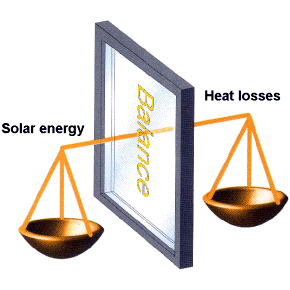|
|
Windows
Windows are still the least insulating part of the thermal envelope with a heat loss coefficient, a U-value, that is typically 4-10 times higher than that of other thermal envelope elements. At one time this lead to the use of very small window areas at the expense of the daylight level, but concurrently with development of improved insulating glazing, the size of typical window areas has again increased.In the pdf-file the present state of windows is reviewed with emphasis on energy conditions and the report is divided in the following chapters: "Sealed units" (low-emissivity coatings, gas fillings, edge fillings), "Frame constructions", "U-value/g-value", "An overview of existing solutions" and finally "research and development" (superinsulating glazing and improved frame constructions and g-value). Special products like solar protection glazing and security glazing are not described.Windows are built up of a number of components (glass type, gas filling, spacer, frame) that can be

|

  
|
|
combined so that in each case the window meets the requirements made to insulating properties, daylight conditions, solar shading, noise reduction etc. It is not always clear how the U- and g-values should be weighted in relation to each other, as other conditions may be determining for the actual case such as the orientation of the window, shadow conditions, the thermal mass of the building, internal heat load etc. In each renovation case an assessment/calculation should be made to find the optimum choice of window in terms of energy.In the field of frames in some countries like Germany development has occurred toward improved insulated constructions, in others the main efforts of manufacturers focus on reduction of maintenance costs. Narrow frame constructions are marketed with a frame height of approximately half of what is found in traditional windows. In contrast the U-value is a great deal higher, but this is partly compensated for by a smaller frame area.
|
|